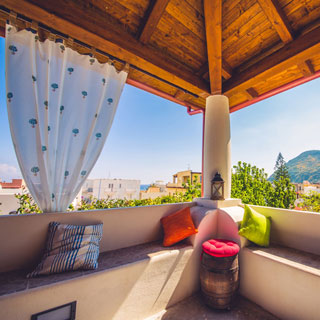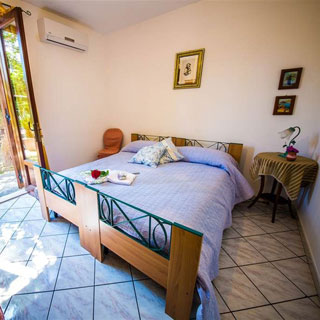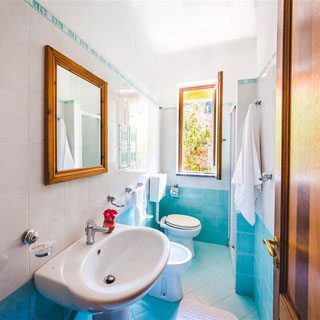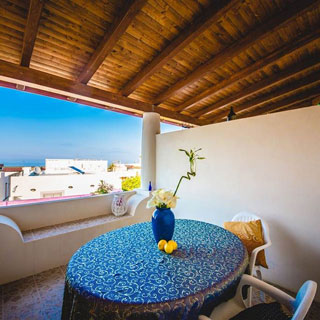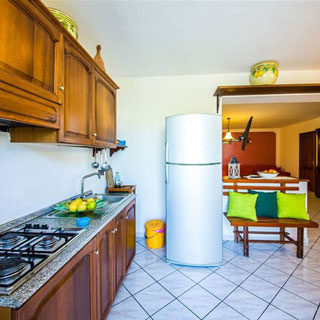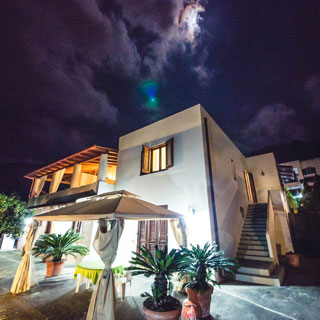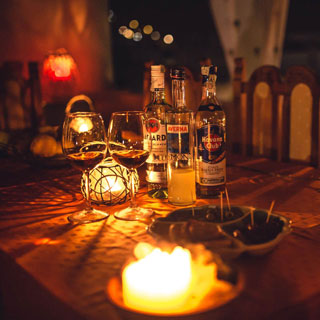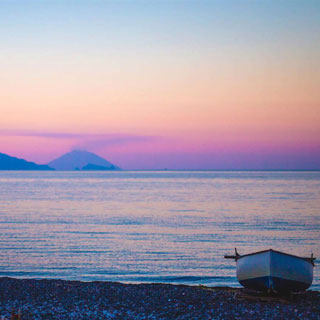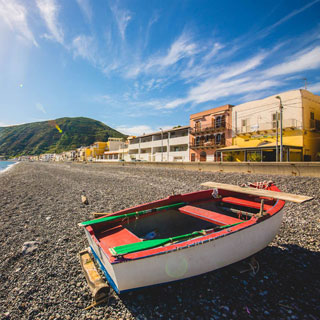Some of our suggestions of what to see in Lipari and the Aeolian Islands
What to see in Lipari and the Aeolian Islands
Lipari Cathedral
What to see in Lipari and the Aeolian Islands
The Cathedral of San Bartolomeo is located in the heart of the Fortified Citadel of Lipari.
To counter the repeated Saracen raids, in 1083 Count Ruggero I of Altavilla sent Benedictine monks to the island, who built a monastery near the Castle: in charge of the works, Abbot Ambrogio, who started the construction of the Norman Cloister received by us.
Destroyed by the Turks, the Cathedral was rebuilt in 1516 by Charles V, who undertook an important fortification work in Sicily and the Aeolian Islands.
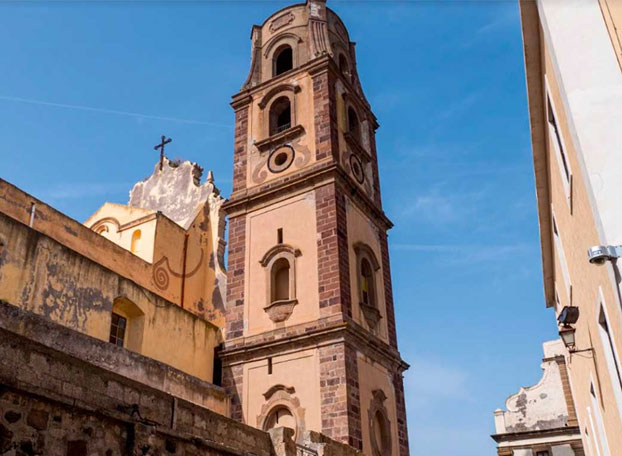
San Calogero thermal baths
What to see in Lipari and the Aeolian Islands
The construction of the Lipari thermal baths, known as San Calogero, in the Aeolian Islands, probably dates back to 1872. Unfortunately, the thermal baths have been closed since 1975 and can only be visited for tourist purposes.
Its thermal water has a sodium bicarbonate-sulphate chemical mixture and an almost neutral pH. The spring draws its water from shallow areas, where rainwater and geothermal and volcanic vapors mix, which enrich it with carbon dioxide and hydrogen sulphide. It flows lukewarm, at a temperature of about 50° centigrade.
Become the "Ecomuseum of Memory", they are open from June to September from Monday to Saturday from 10 am to 6.30 pm; from September to October from 10 to 14; from October to June on request.
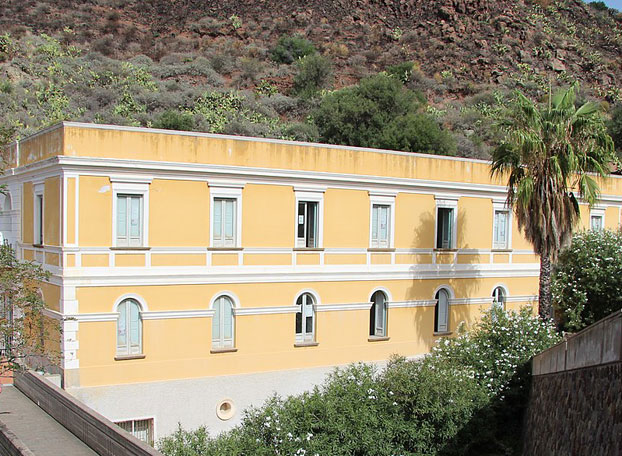
Archaeological Museum of Lipari
What to see in Lipari and the Aeolian Islands
The complex stands on the rhyolithic rock of the "Castle" of Lipari, a sort of natural fortress, used by the populations who settled on the island to defend themselves from attacks and invasions.
The museum is the testimony of all the cultures and traces of the peoples who occupied the territory, it is possible to admire the huts of the Bronze Age, on superimposed levels, four to be exact; structures from the Greco-Roman period and an urban layout from the 2nd century BC.
The museum of Lipari, one of the main historical and cultural attractions of the island, is divided into six large areas that host respectively: the prehistoric section, the epigraphic section, the classic section, the section of the smaller islands, the volcanological section, the of paleontology.
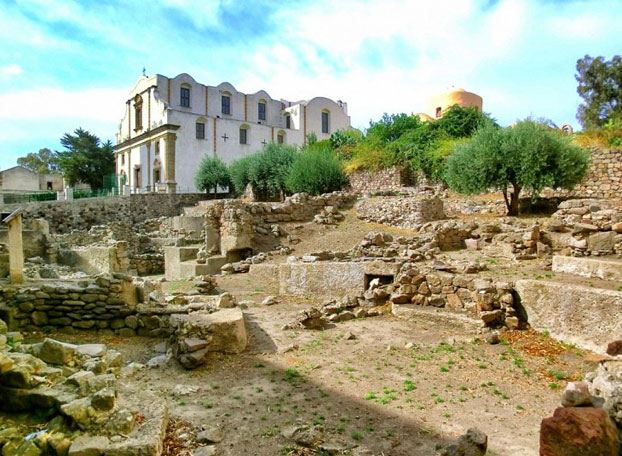
Norman Cloister of Lipari
What to see in Lipari and the Aeolian Islands
The Norman Cloister of Lipari is a corner of rarefied grace that hides among the architectural plots of the San Bartolomeo cathedral complex.
It is a legacy of the Normans who, having crossed the threshold of the year 1000, took action to give new life to Lipari which had depopulated due to repeated Arab invasions. The task was supported by the ineffable Benedictine monks who did not fail to bring beauty even to the largest of the Aeolian Islands.
The rediscovery took place a little less than forty years ago, when it was causally noticed and then stubbornly brought to light.
Today it shines with timeless poetry. It only takes a few steps to go through it entirely, yet you fill your eyes with grace.
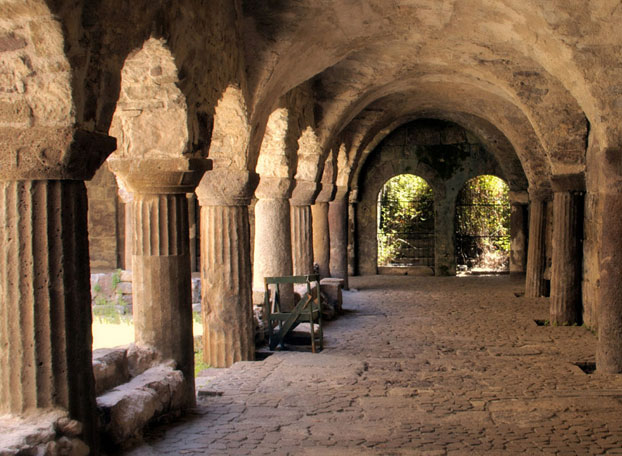
Videos of Lipari and the Aeolian Islands
Papiro Holiday Homes location and map
Located in the beautiful bay of Canneto on the island of Lipari, Sicily
We rent newly built studio apartments with sea view, two-room and three-room apartments consisting of bedroom, kitchen, bathroom and terrace with sea view, in an atmosphere suspended in time.
Even for just one day!
Located in the splendid bay of Canneto on the island of Lipari, Papiro holiday homes is a structure that pays attention to the smallest details and the well-being of guests.
The Aeolian Islands are an earthly paradise just waiting to be explored. Lipari offers great hiking opportunities with its beautiful nature trails.
